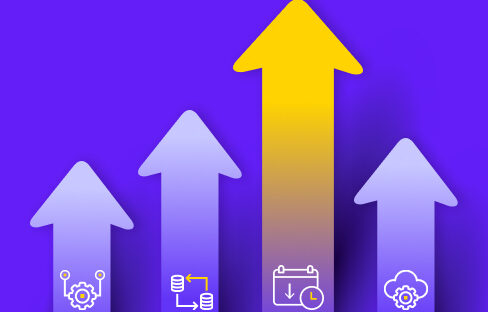It was great to attend the CXO Cloud Summit! During my talk at the Summit, I discussed how companies can end the age-old tug-of-war between the data needs of business users and the technical and control constraints of IT departments. Here’s an overview of what I presented.
Business Needs vs. IT Control: The Age Old Struggle
Since the shift to the cloud, data has turned from a key business asset into the business asset that drives the most value. Just look at the recent renaissance of Israeli companies on Wall Street. In 2021, Israeli companies reached a historic $300 billion market cap on Nasdaq and NYSE. Israeli companies with strong IPOs and stock performances, including Monday, Similarweb, and Rivery customer WalkMe, have all linked their business success directly to data:
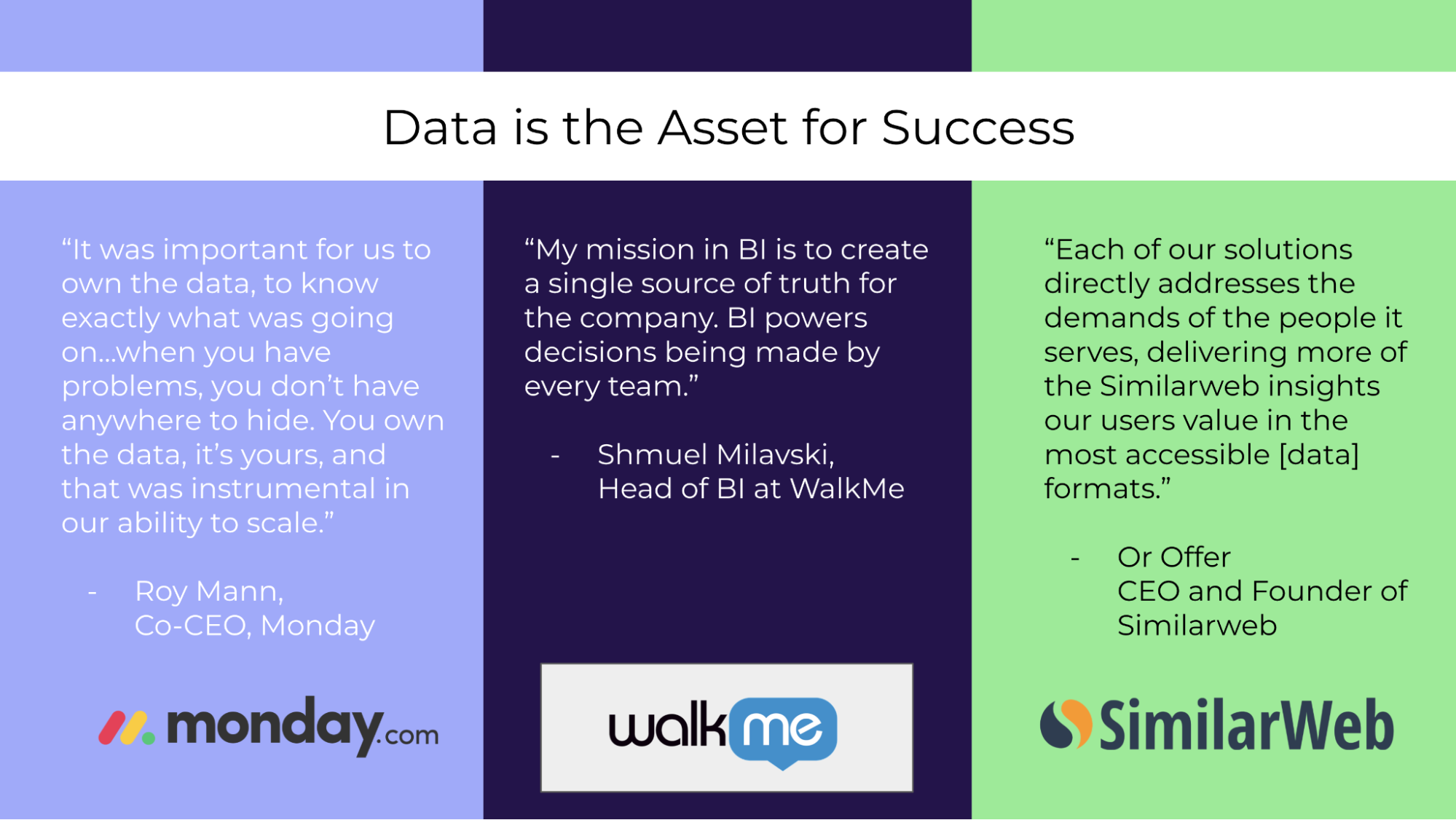
Despite this focus on data, most companies still experience data bottlenecks in day-to-day operations.
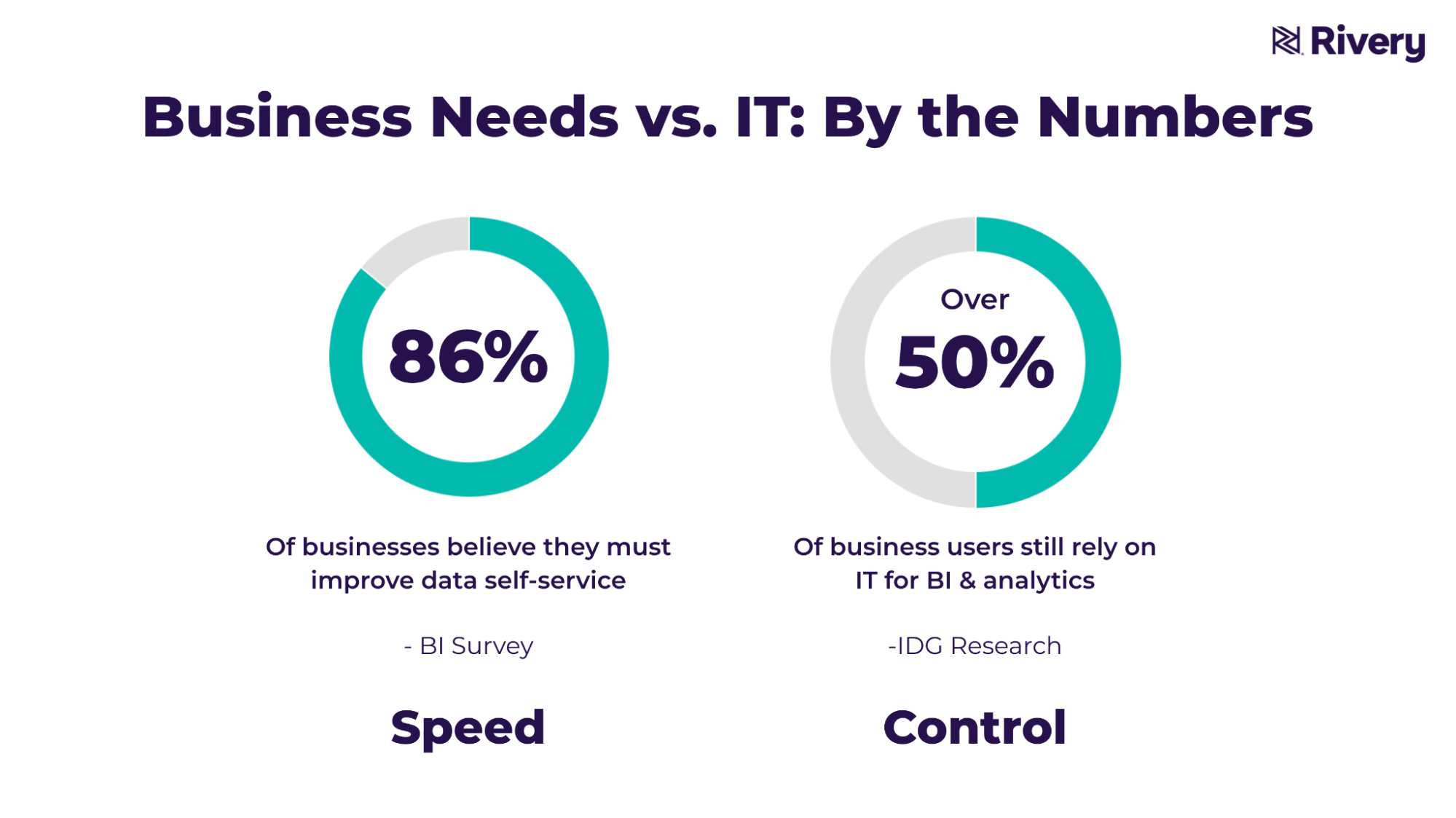
Delivering data to internal customers, on time and in the right format, remains a huge challenge for many companies. That’s why 86% of businesses believe they must improve data self-service. But in actuality, over 50% of business users still rely on IT for analytics and BI.
Meanwhile, the work burden on IT departments has only increased due to the rapid digitalization caused by Covid-19. This has further strained IT resources, and makes it even more difficult to get the right data to business users.
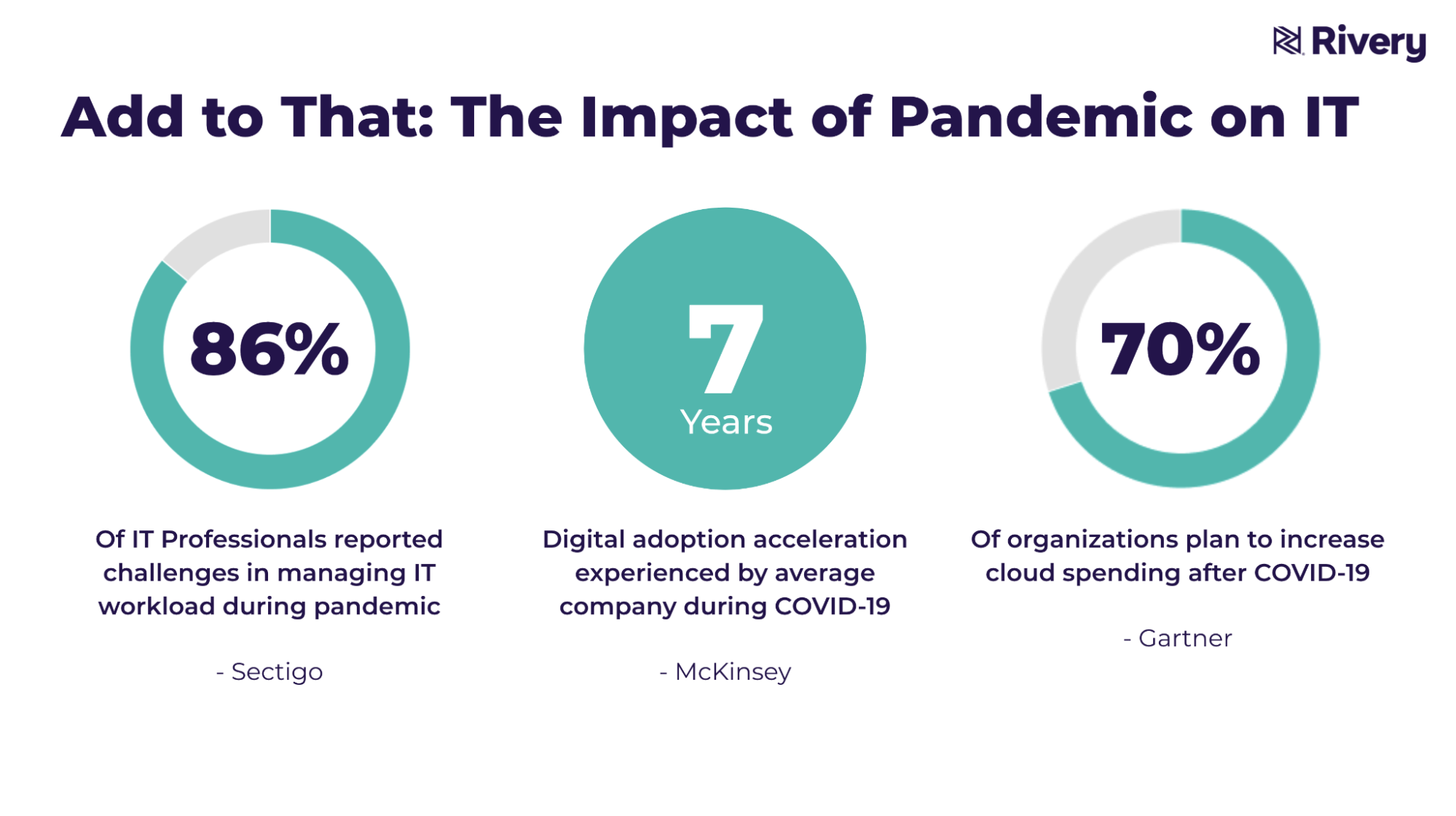
Now, in a perfect world, here’s what data project governance between IT/business users should look like.
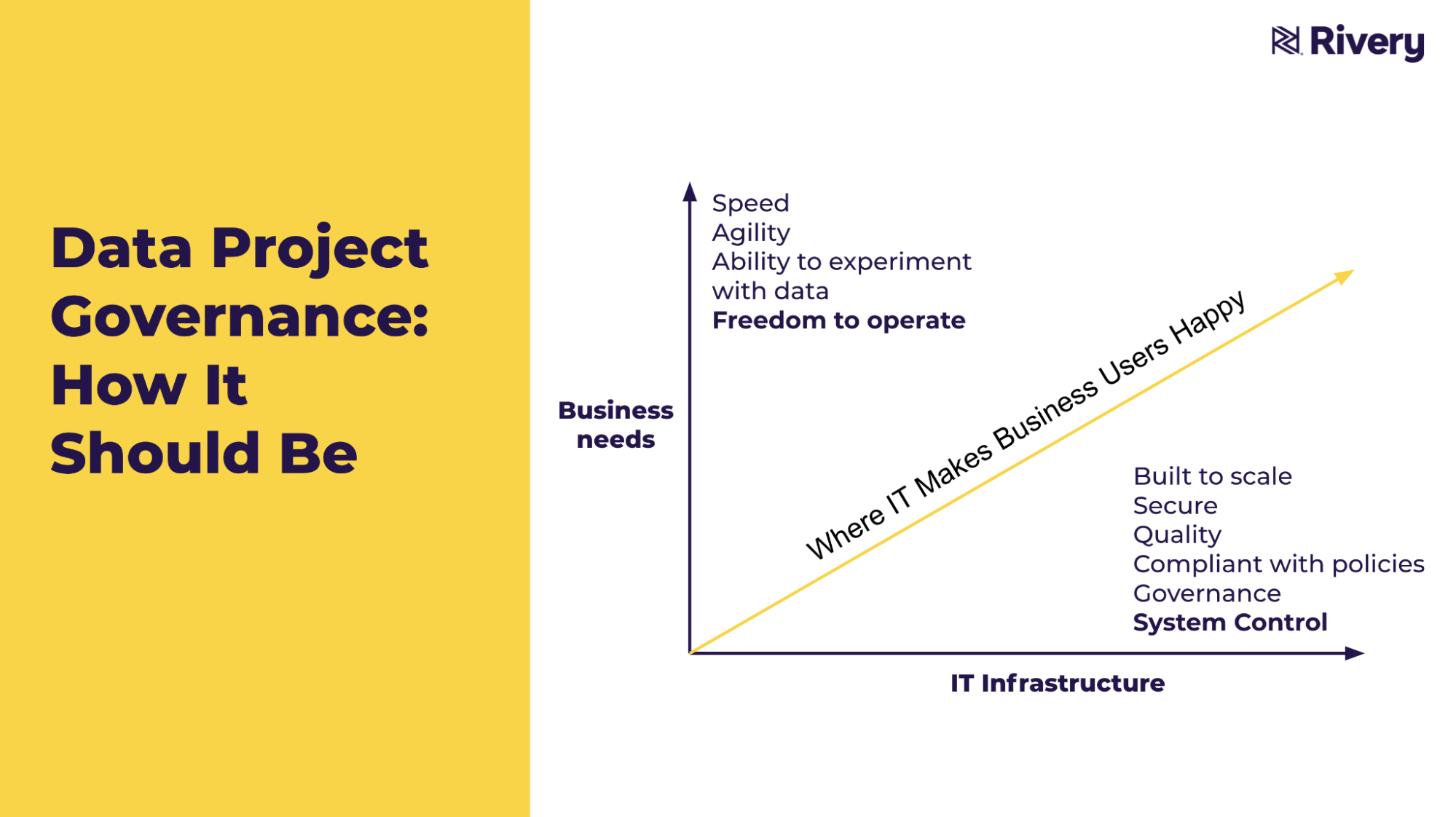
Business users should perform data projects with easy access to data, speed, agility, and the ability to experiment. They should get the data they need, when they need it, without delays or jumping through hoops. At the same time, the IT team should use a data system that is scalable, secure, quality-assured, compliant with policies, and ruled by a governance framework. This is the best-of-both-worlds scenario: business users gain the freedom to operate, while IT maintains system control.
But that’s the ideal scenario. Here’s what data project governance between IT and business users usually looks like.
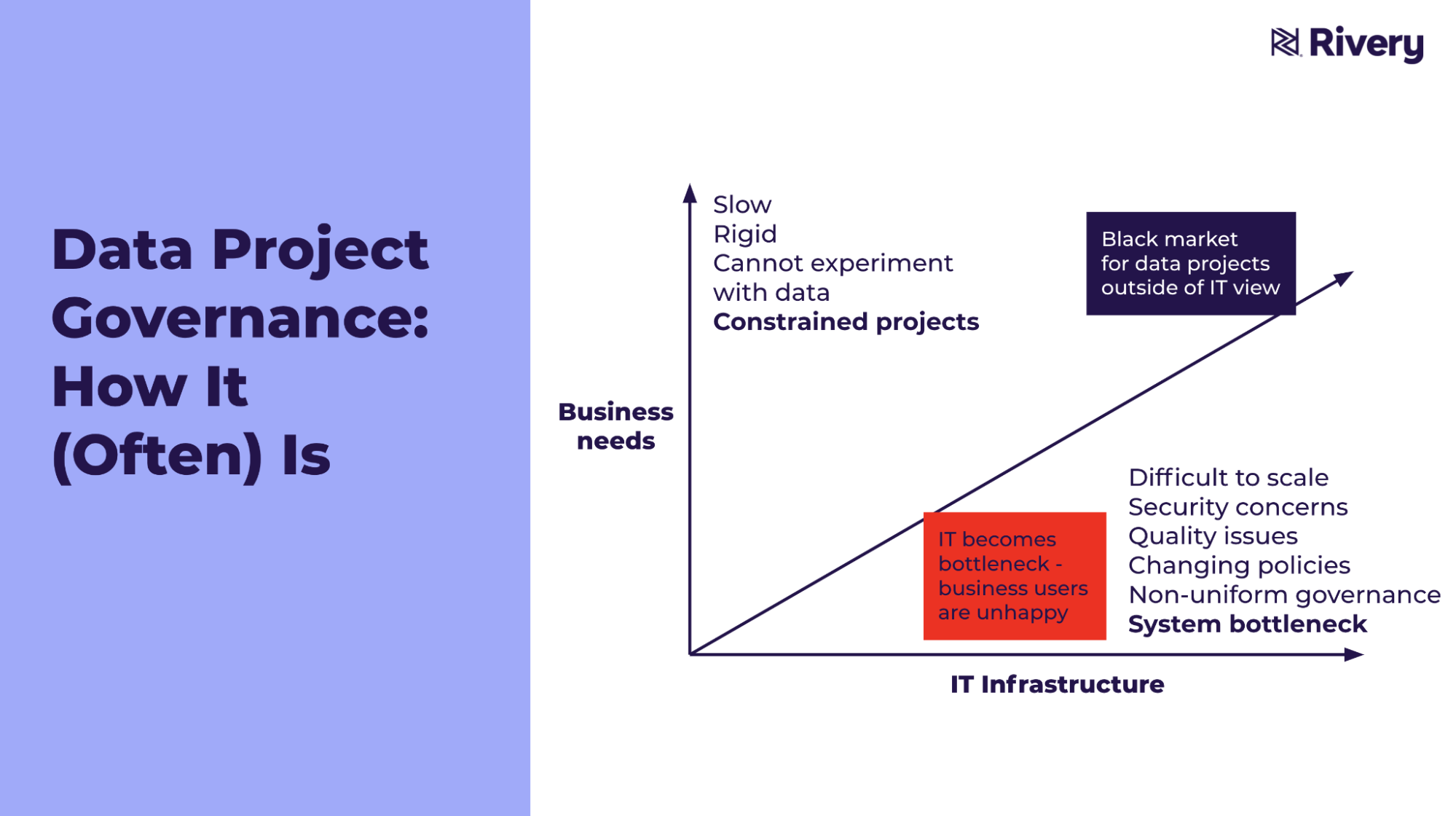
Traditionally, business users engage in a back-and-forth with a busy IT team to get the data they need. If an objective changes during a data project, business users must go back to zero and request new data from IT. Meanwhile, IT often manages data infrastructure that is difficult to scale, insecure, inconsistent in quality, non-compliant and ungovernable. This results in a system bottleneck with constrained data projects that are slow, rigid, limited, and prone to data gaps.
With this inefficient status quo, 63% of business users cannot gather insights on their required timeframes. This frustration leads business users to undesirable actions, from launching unpermitted data projects, to giving up on data entirely and making uninformed decisions.
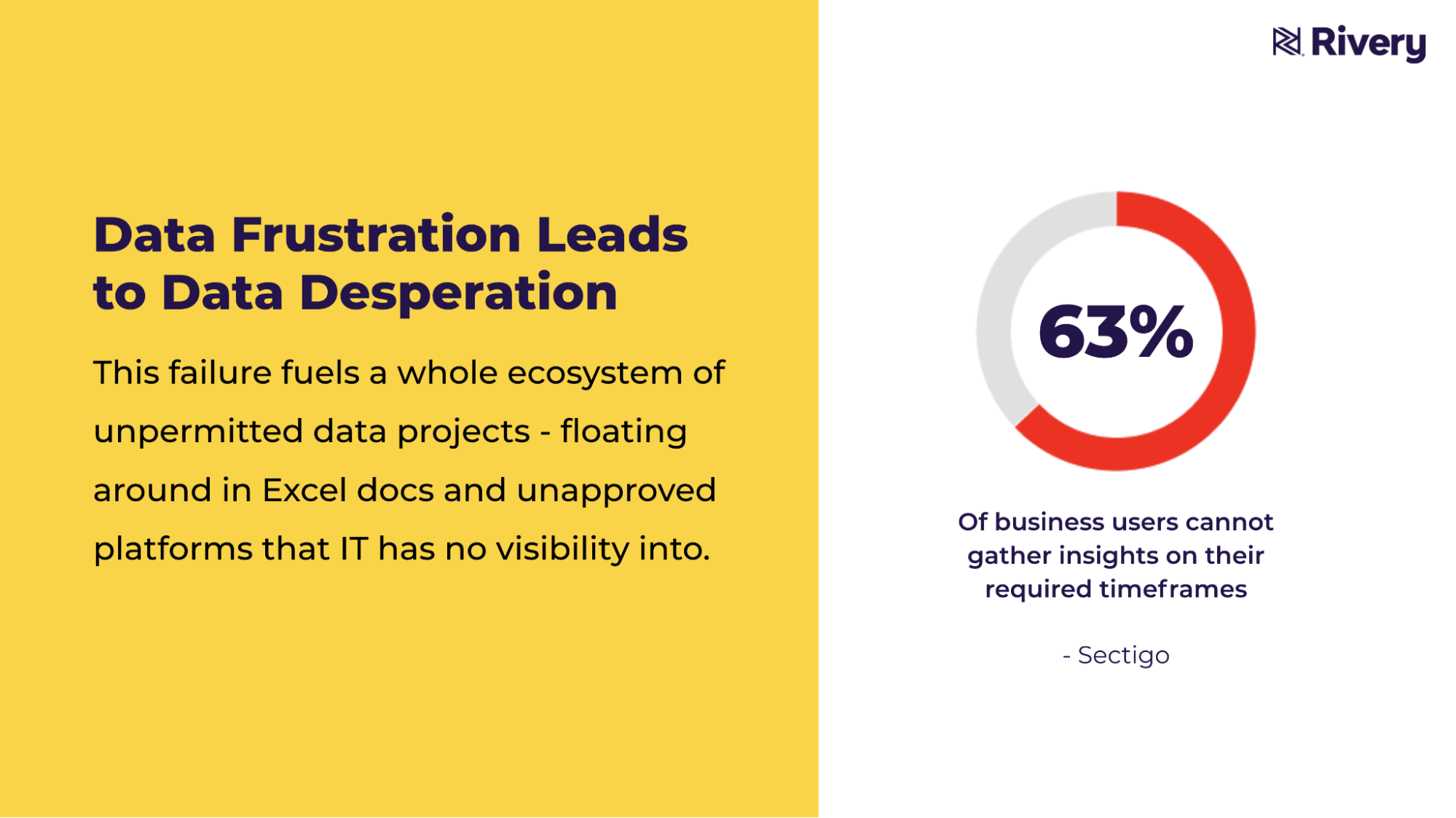
Cloud Data Technology – The Solution to the Eternal Business vs. IT Struggle
But, in recent years, with the advent of cloud data technology, many companies are starting to move past this broken status quo. Data management platforms, cloud data warehouses, and analytics dashboards are enabling companies to build cloud-first tech stacks that offer freedom to business users, and total control to IT. This realizes the best-of-both-worlds scenario I outlined above.
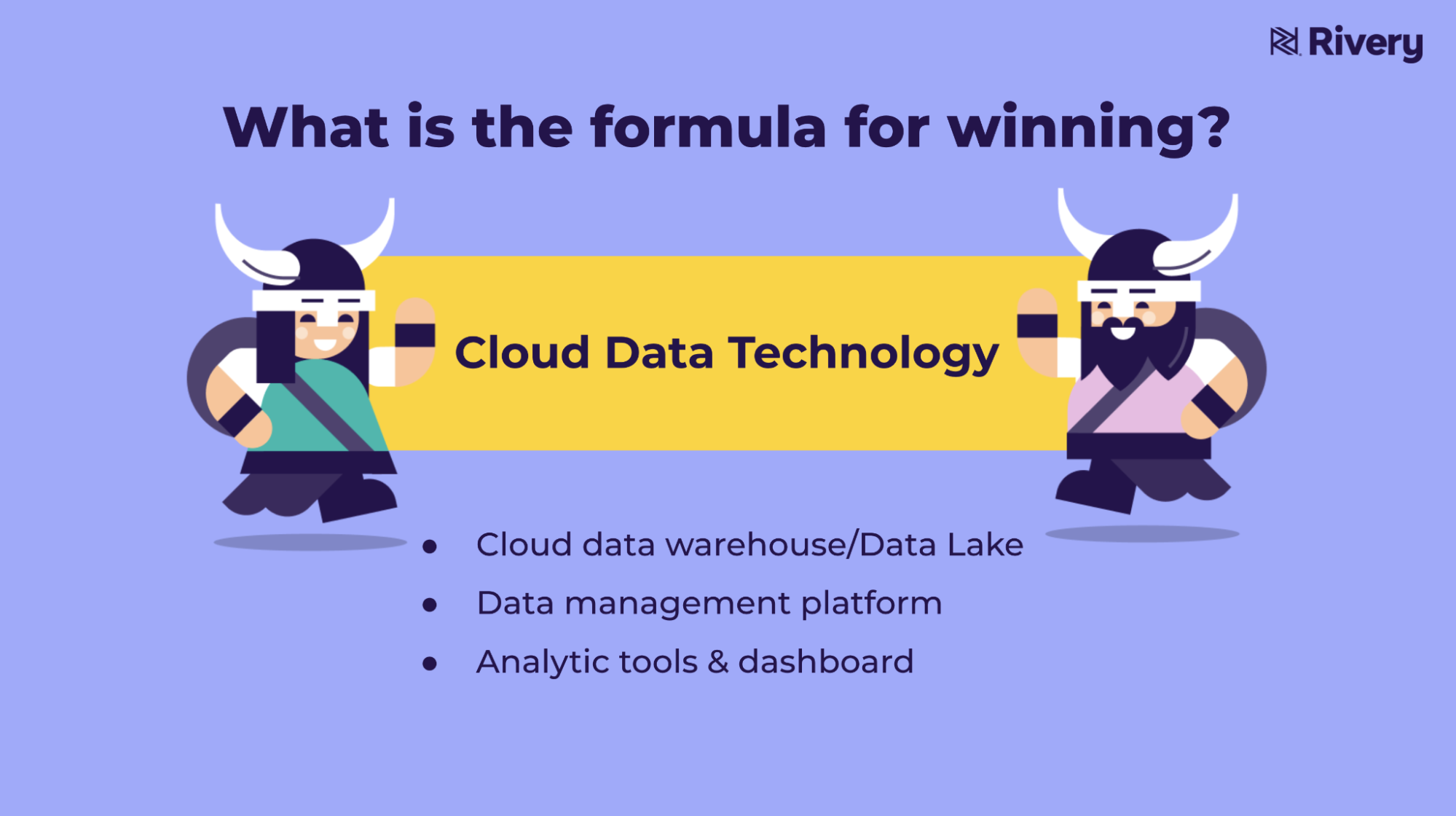
By empowering business users to access the data they want, when they want it, and keeping system control with IT, cloud data technology eliminates the friction between the two historically at-odds camps. That means no more choke points: business users get data on their terms, while IT 100% owns and maintains the data infrastructure.
This leads to exciting new possibilities with data, including data democratization, faster data projects, and a bottom-up data culture.
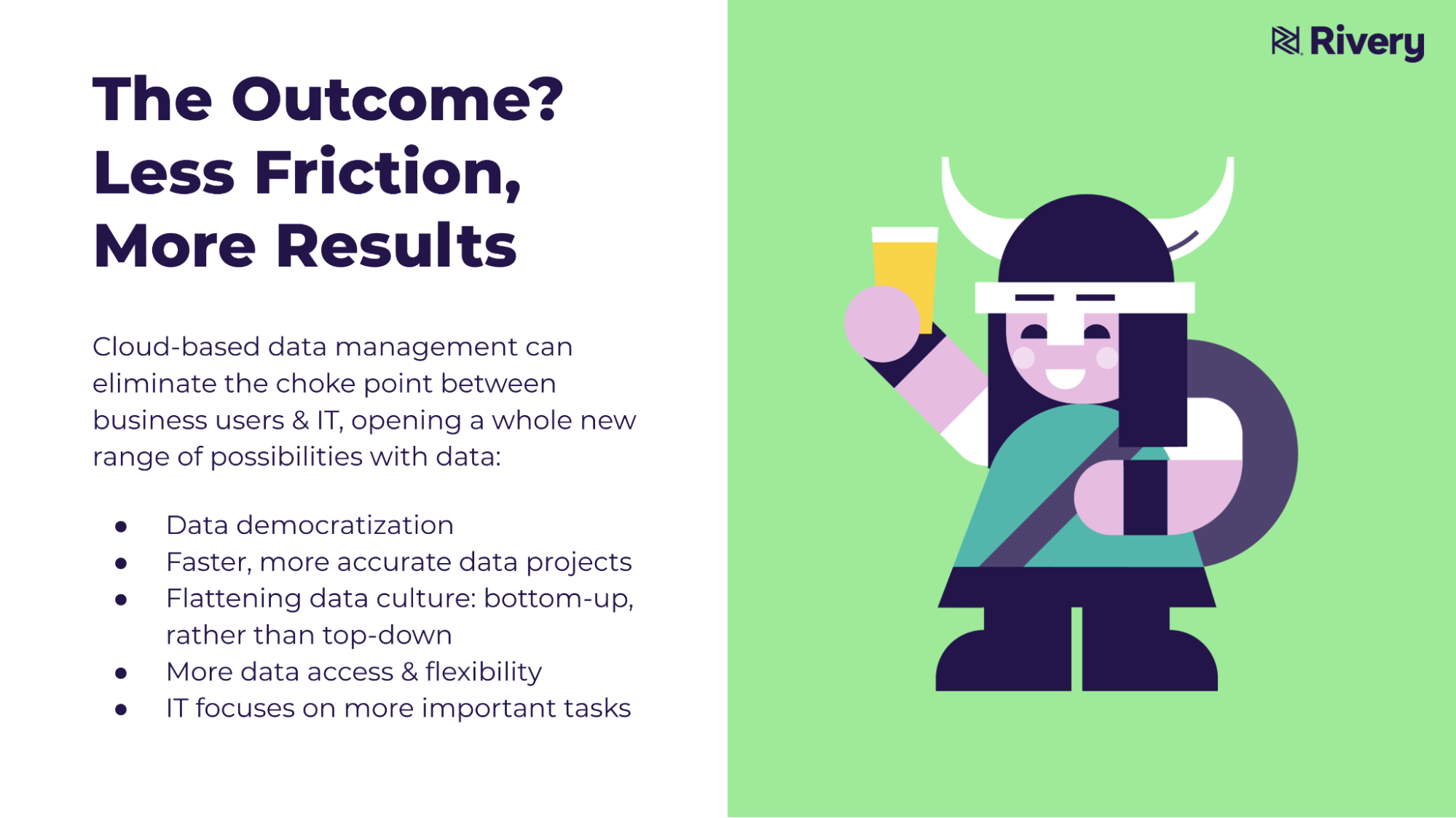
Companies can end the eternal business vs. IT struggle once and for all with a data management platform, a cloud data warehouse, and an analytics tool working in tandem. Business users win with easily accessible data, a single source of truth, no barriers to data projects, and the freedom to experiment. The IT team wins with superior scalability, governance, compliance, security, and quality assurance. fully-managed data infrastructure, enabling the IT team to focus on more cerebral tasks.
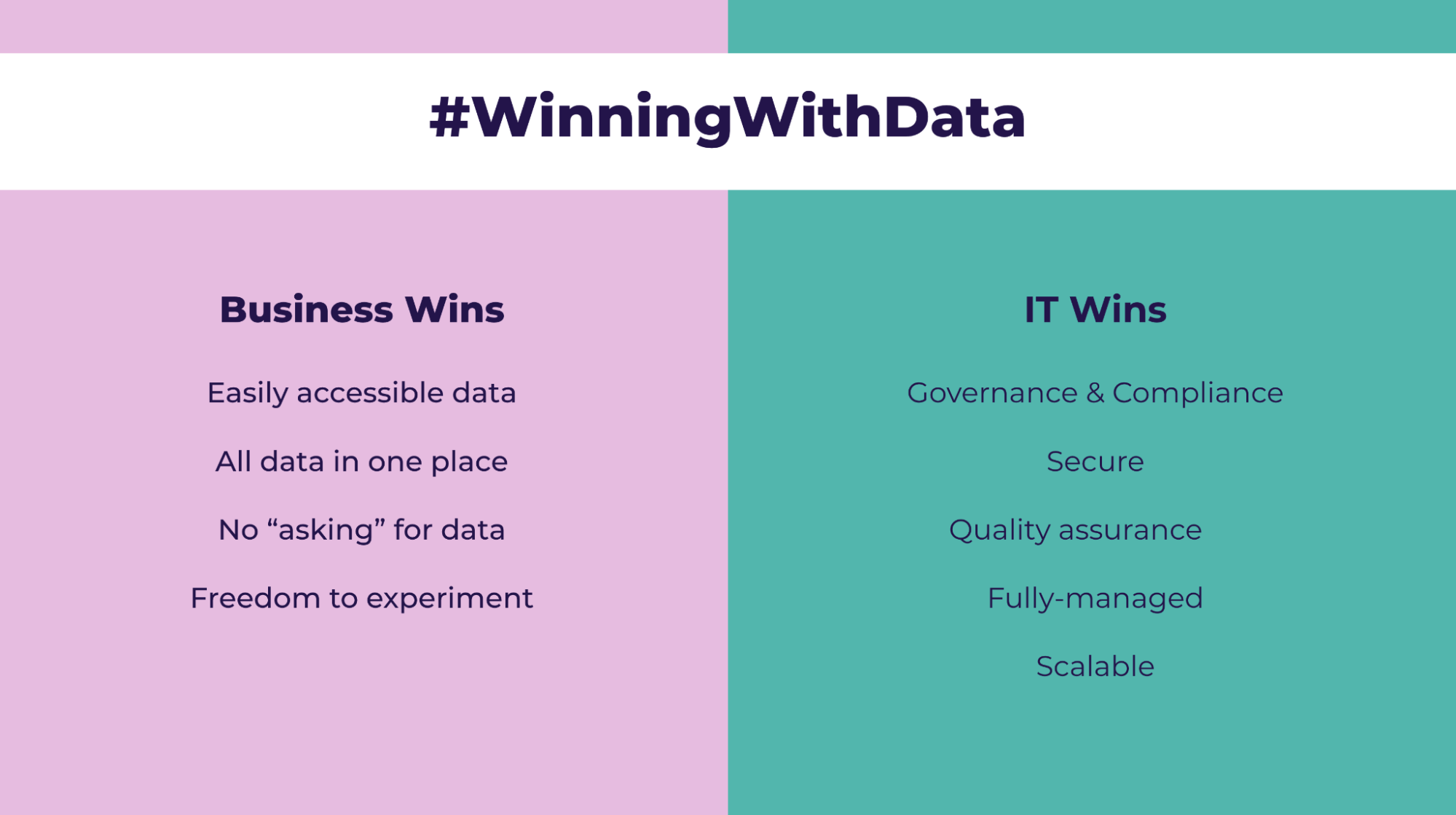
This is the “everybody wins” scenario that once seemed impossible, but is now a real possibility, thanks to the capabilities of cloud data technology.
Say Goodbye to Business Needs vs. IT – And Hello to #WinningWithData
In today’s data-centric economy, the companies who win with data are the companies that will own the market. But in order to unlock the full potential of data, companies must move past old data barriers, including the tug-of-war between business users and IT. With the emergence of cloud data technology, companies no longer have to pit the data needs of business users against IT priorities. Business users can now access the right data, and IT can maintain system control, for a win-win situation.
I had an awesome time at CXO Cloud Summit, and I look forward to touching base with everyone who followed up with questions. Please reach out to me on LinkedIn or Twitter if you have any comments!
Minimize the firefighting. Maximize ROI on pipelines.




